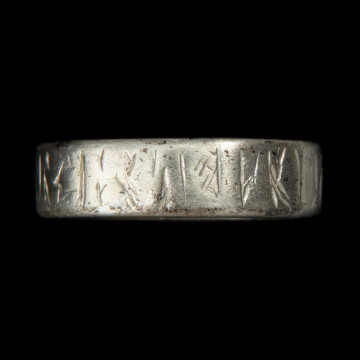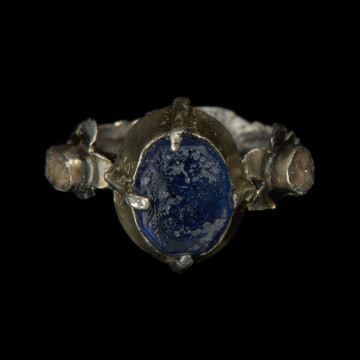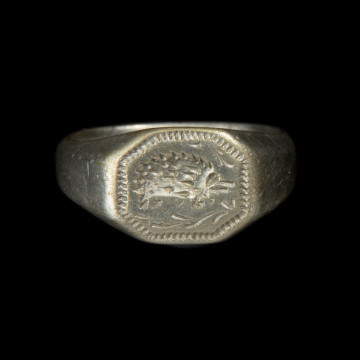
Wedding ring
przełom XIV i XV wieku
National Museum in Szczecin
Part of the collection: Szczecin treasure from Podzamcze
In the Middle Ages, clasps were used to connect the edges of a garment, the front or sleeves of men's and women's clothes. They could also be used as decorative brooches. Clasps, like buckles, consisted of a spike and a decorated frame. They were an indispensable part of an outfit, which was supposed to emphasise the wealth and social status of the wearer. In the 14th - 15th centuries, special laws, following the wealth and social status, regulated wearing silver ornaments in towns belonging to the Hanseatic League. Patricians and rich burghers could wear them. The same was the case with late Gothic costume ornaments and jewellery, discovered during archaeological excavations in Szczecin in 1999, in the so-called Podzamcze treasure. Most of the items are perfectly preserved, although traces of alterations and rubbed gilding can be seen in some cases. Among the clasps, the one in the shape of a six-pointed star with white glass eyes, belonging to the so-called star clasps, either six or eight-pointed, is worthy of note. The decoration was made with the granulation technique. The technique, known already in antiquity, consisted in decorating the surface with tiny balls of gold or silver, called granules, which the jeweller arranged in various ornaments. The glass beads were made to imitate precious stones, which only wealthy people could afford to own.
Małgorzata Peszko
Author / creator
Dimensions
cały obiekt: height: 1 cm
Object type
costium adorment, adornment
Creation time / dating
Creation / finding place
Identification number
Location / status

przełom XIV i XV wieku
National Museum in Szczecin

National Museum in Szczecin

przełom XIV i XV wieku
National Museum in Szczecin
DISCOVER this TOPIC
National Museum in Szczecin
DISCOVER this PATH
Educational path